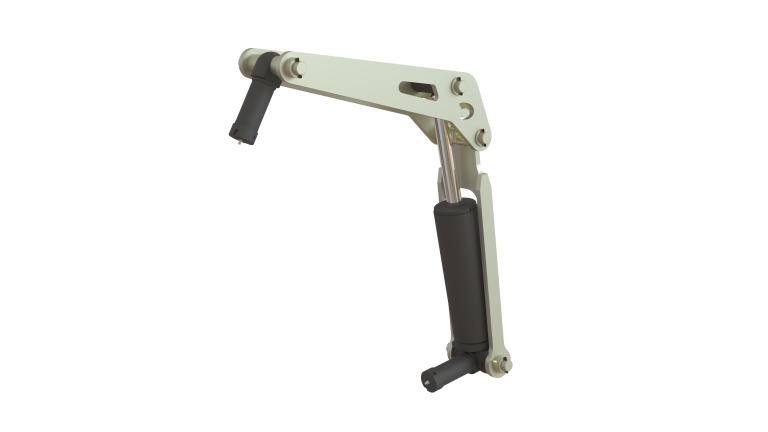References
Features
The study, the conception and the technical specifcations are only suitable for tippers.
– Service pressure: depending on the tipping system
chosen (see table)
– Max. operating pressure: depending on the tipping
system chosen (see table)
– Sturdy construction, treated trunnions
– Max. speed: 0.2 m / second
– Temperature: – 30°C to + 90°C
– Mineral hydraulic oil
– Protection : cylinder with double black primer
painting
– Structure nickel zinc
– Ready to be mounted product
Recommendations
– Protect the hydraulic circuit by a relief valve and a filter;
-Check the state of purity of the fluid (foreign bodies);
– Remember to purge the cylinders and the hydraulic
circuit;
– Do not, under any circumstances, use the tipping
system as a mechanical stop;
– Never allow the body to lean against the cylinder
when in stowed position (gap > 20mm).
• Storage:
– The trunnions must be greased if the tipping system
is to be stored for an extended period of time;
– Protect the cylinder shaft and trunions during high
pressure steam cleaning.
• Spare parts: seal kits, see price list.
• Instructions: on request.
• Guarantee: please refer to the general sales
conditions.
The normal operation of a CHAPEL hydraulic tipping
system consists in the regular lifting of a tipper body
to progressively empty its load over its path, whilst
respecting the operating and safety conditions.
A tipping system is solely a lifting device, it cannot,
under any circumstances, stabilise or guide the tipper
body.
Additional information
Safety procedures tipping
Ensure that
– The necessary tipping pressure is less than the
maximum recommended operating pressure;
– The load is compatible with the vehicle;
7KHJURXQGLVVWDEOHDQGÀDW
– There are no people or obstacles in the working
perimeter (at ground level and high up),
– The load has been distributed uniformly;
– The tyre pressure is correct;
– The load is progressively emptied.
Strong adhesion to the body may cause the vehicle to tip over.
– Do not move the vehicle during tipping;
– Rapid operation of the cylinder tipper control;
– Working under a raised tipper body that has not
been secured;
– Tipping if the wind is buffeting the vehicle.
and transverse forces that are not allowed by the cylinder.
This may therefore cause considerable damage and place the operator in danger.»


